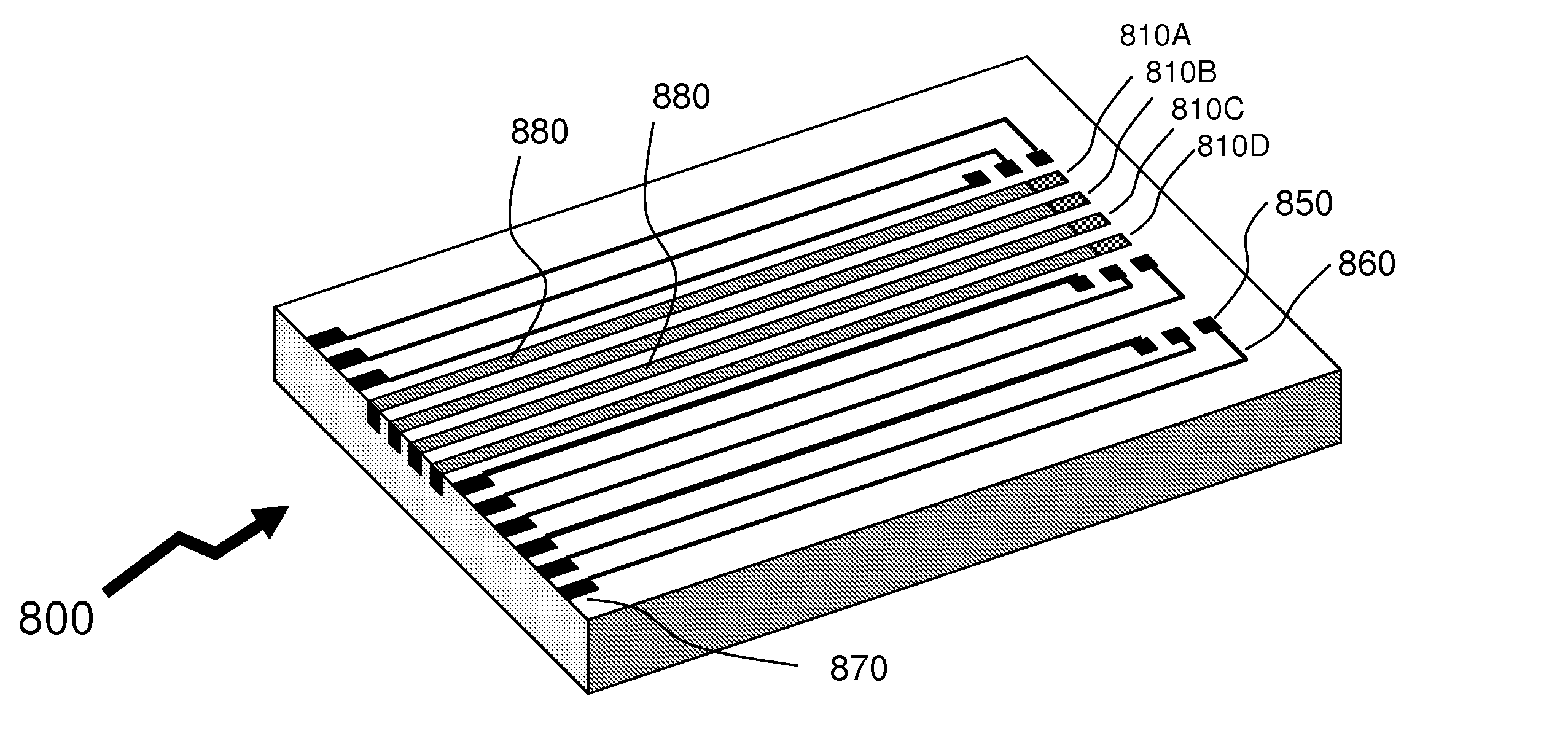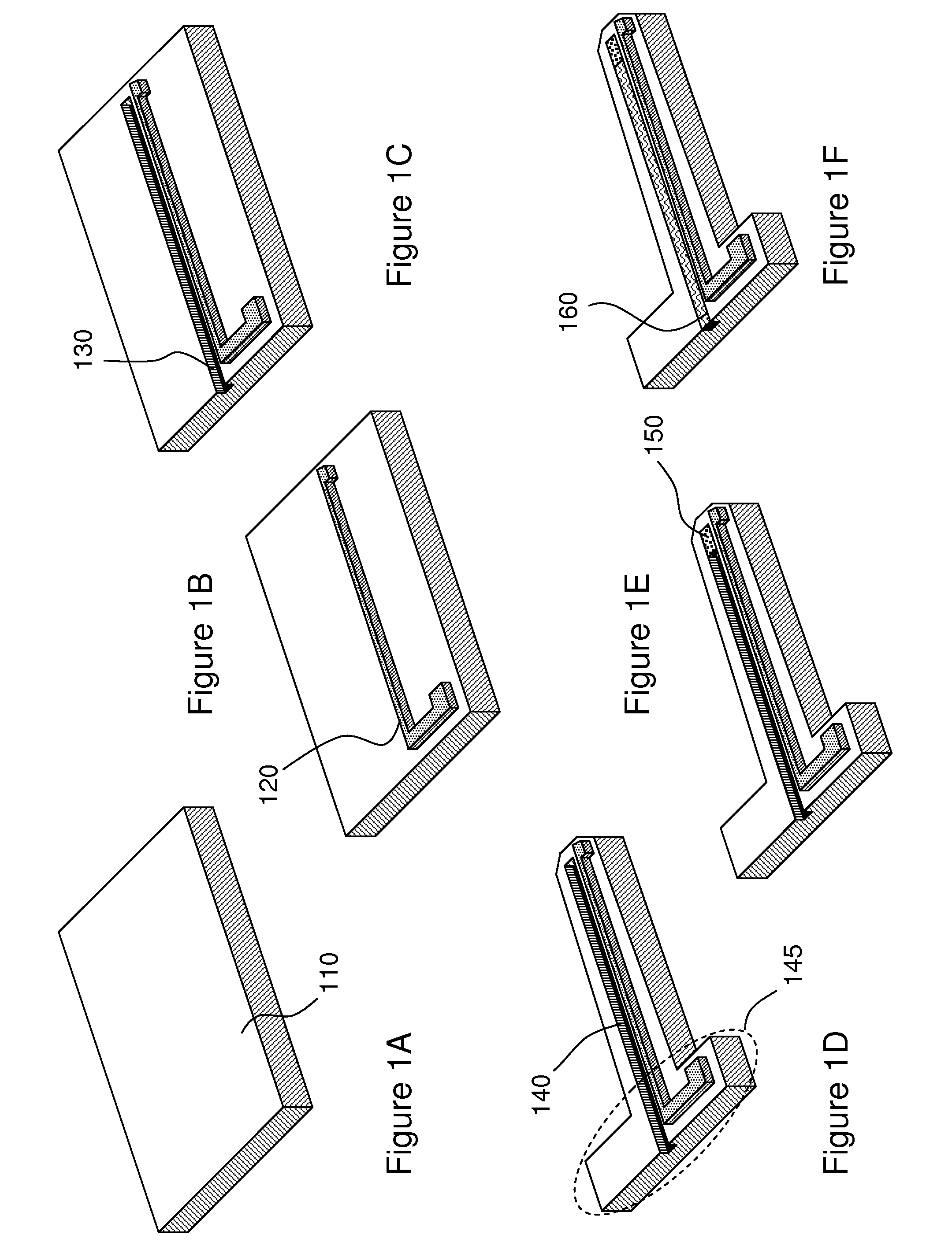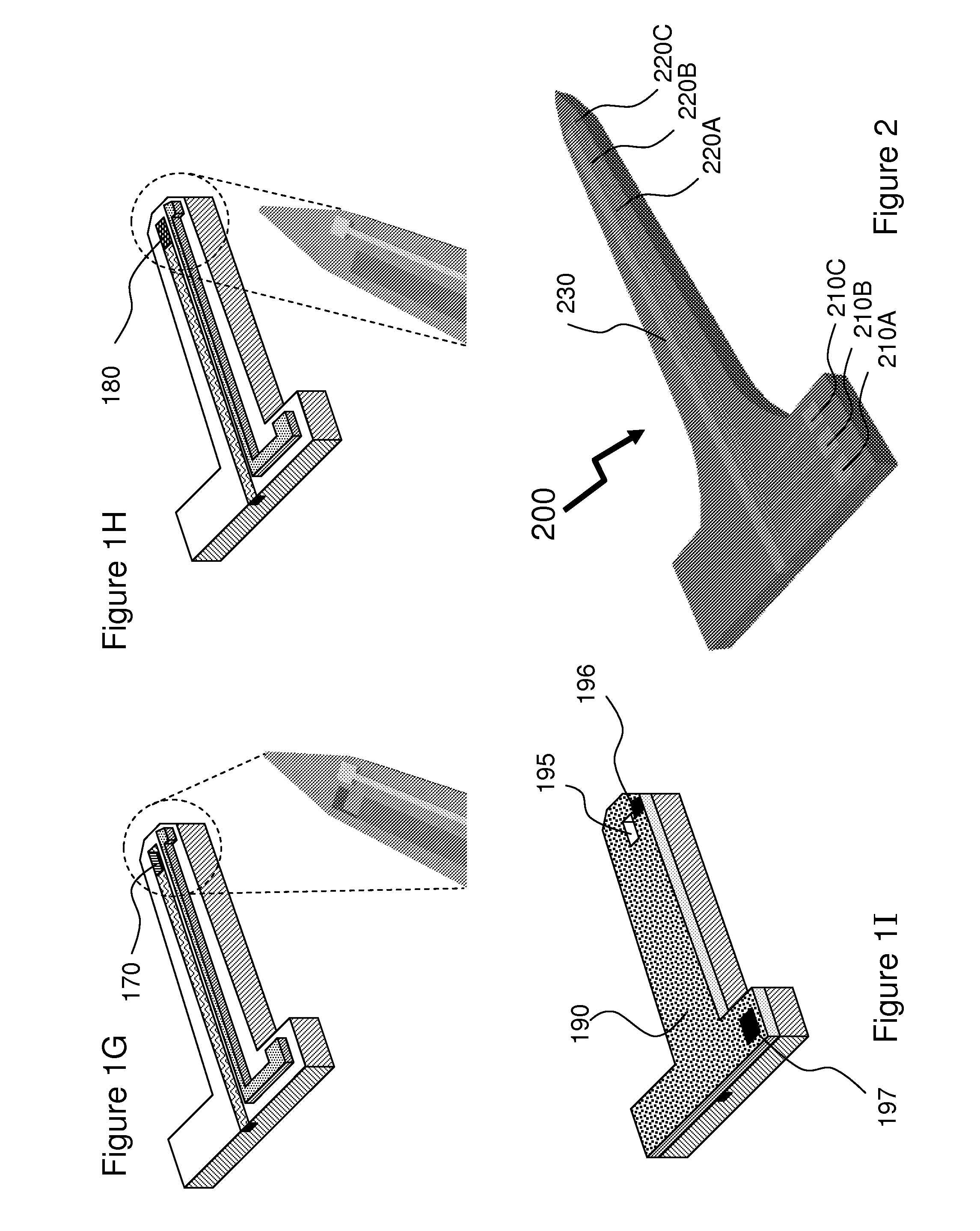Optically interrogated solid state biosensors incorporating porous materials—devices
a biosensor and porous material technology, applied in the field of solid-state biosensors, can solve the problems of many of the details of how the brain works (and doesn't work) remain a mystery, and scientists have one of their greatest challenges
- Summary
- Abstract
- Description
- Claims
- Application Information
AI Technical Summary
Benefits of technology
Problems solved by technology
Method used
Image
Examples
Embodiment Construction
[0043]This present invention is directed solid state biosensors and more specifically to monolithic and hybrid integrated silicon optical biosensors employing porous silicon and porous polymer structures.
[0044]Reference may be made below to specific elements, in many instances numbered in accordance with the attached figures. The discussion below should be taken to be exemplary in nature, and not as limiting of the scope of the present invention. The scope of the present invention is defined in the claims, and should not be considered as limited by the implementation details described below, which as one skilled in the art will appreciate, can be modified by replacing elements with equivalent functional elements and different processing sequences, etc.
[0045]OPTICALLY INTERROGATED SILICON PROBE:_The hybrid neural probe is a microdevice that forms the connection between the biological neural tissue with external devices and electronic systems, and monitors neural electropotentials and...
PUM
 Login to View More
Login to View More Abstract
Description
Claims
Application Information
 Login to View More
Login to View More - R&D
- Intellectual Property
- Life Sciences
- Materials
- Tech Scout
- Unparalleled Data Quality
- Higher Quality Content
- 60% Fewer Hallucinations
Browse by: Latest US Patents, China's latest patents, Technical Efficacy Thesaurus, Application Domain, Technology Topic, Popular Technical Reports.
© 2025 PatSnap. All rights reserved.Legal|Privacy policy|Modern Slavery Act Transparency Statement|Sitemap|About US| Contact US: help@patsnap.com



